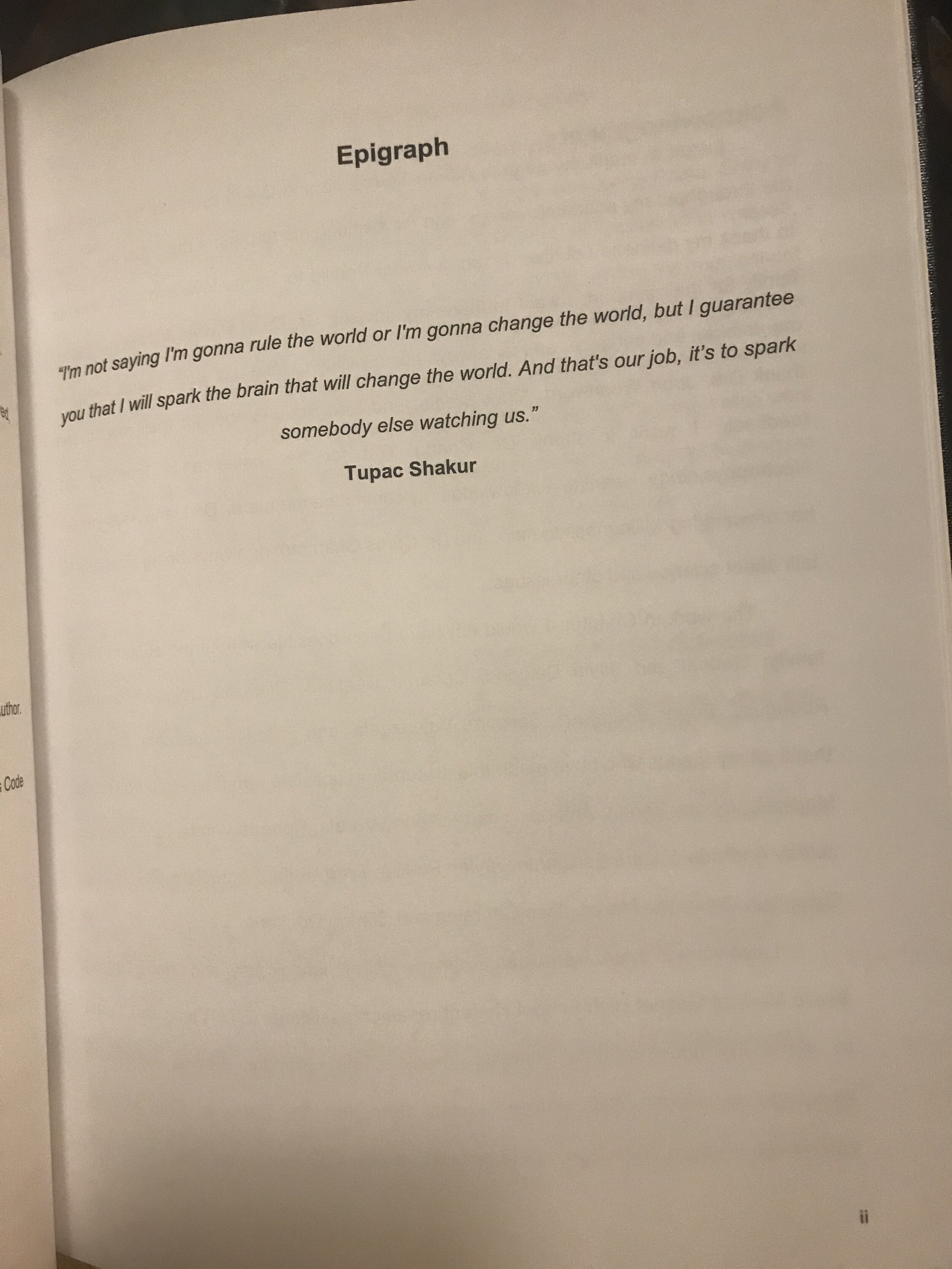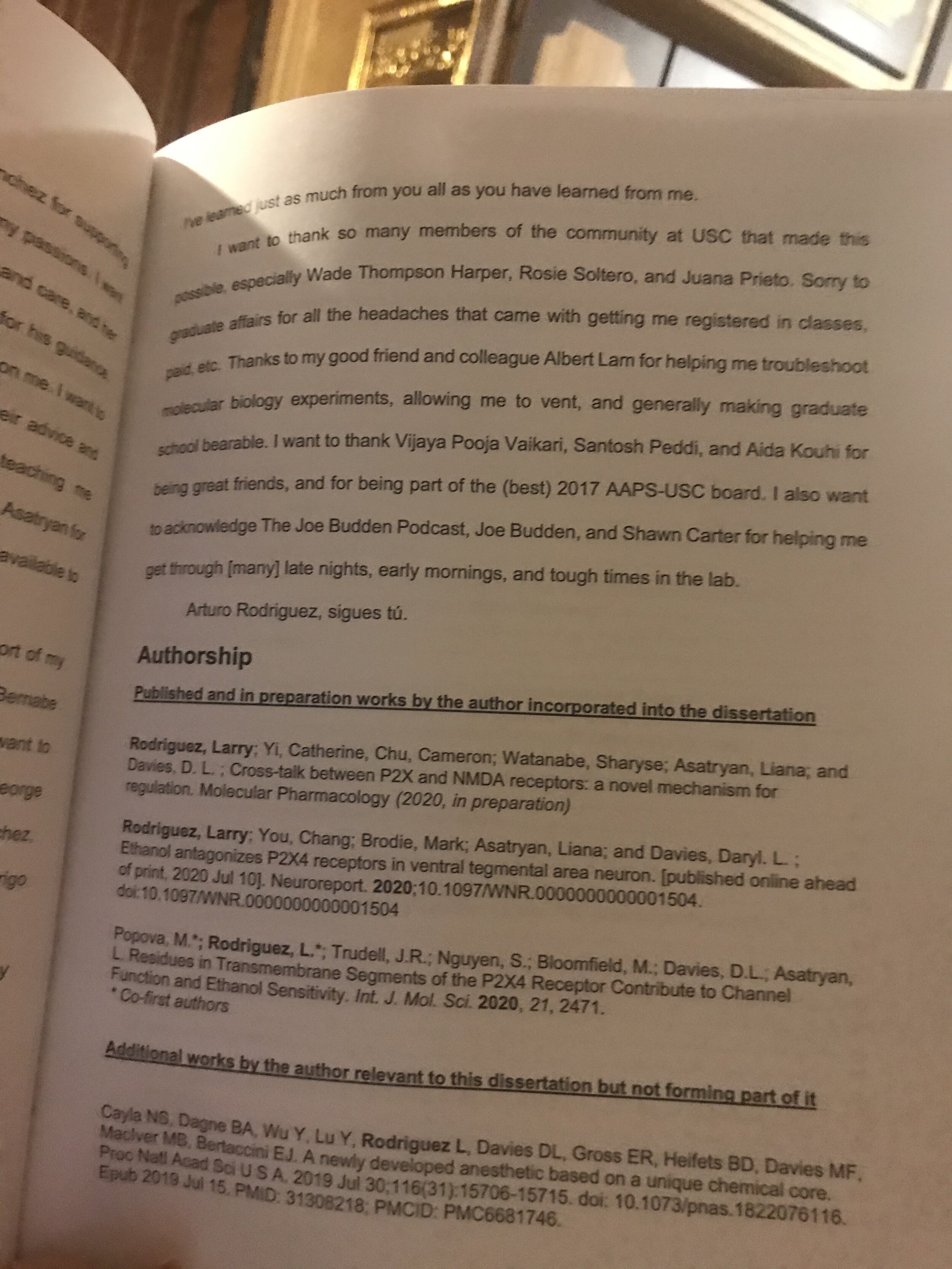Winter 2020 update
Over the holiday break, I figured I’d post some updates, mostly what I’m thankful for.
My amazing research team at USC
I wanted to celebrate the acceptance of our final publication with my co-authors, but given that I’m working at the Scripps Research Institute in La Jolla, and everyone is spread out between SoCal and NorCal, I had to get a little creative. I already planned a post-publication meeting with my undergrads (and Wilson) and my personal tradition is to congratulate my students’ accomplishments in lab by giving them an electrophysiology pins. I already placed the order for ephys pins (twophotonart.com has the coolest science pins) but I wanted to do something bigger. Publishing as an undergrad isn’t easy, especially during a pandemic. I also wanted to celebrate Sharyse getting accepted into pharmacy school (Congrats Sharyse!)
My girlfriend found a baker online who does custom orders (IG: bananabellebrown) and asked if I wanted to order any custom cookies. I figured that oocyte cookies would be a pretty cool way to celebrate our accomplishment and placed an order immediately. The cookies came out so amazing that we almost didn’t want to eat them!
I started giving out electrophysiology pins to my undergrads when they either graduated or left lab, and I think publication pastries is my new tradition. Shoutout to Anabelle for the amazing cookies!
My parents got my physical dissertation
I uploaded my dissertation to the USC libraries in July, and it was available online since August, but I’ve been waiting for my parents to get the physical copies for a while now. I took screenshots of the acknowledgements page and shared it with people online but seeing the words on a page just hits different.



When I was 16, I promised myself to quote Tupac in my dissertation, and it felt good to finally see his words on the page. I think the quote rings especially true in science. Jay Z, Joe Budden, and The JBP also got a shoutout.
Last but not least, I had to give a shoutout to my little brother. Hopefully this serves as inspiration to follow his dreams.
The amazing training environment at Scripps
My background in biochemistry helped me a lot during grad school (molecular/cell biology) and I learned a lot about the brain and addiction during my PhD. However, before joining the Roberto lab, I didn’t really consider myself a neuroscientist. I had only ever done ~30 brain slice recordings (extracellular) in one brain region (VTA) during the summer of 2018 (Mark Brodie’s lab at UIC College of Medicine) and I mostly worked with Xenopus laevis oocytes, which are a great discovery tool, but not as translational as mice or rats.

My knowledge gap in neuroscience is exactly why I joined Marisa Roberto’s lab at the Scripps Research Institute. I was comfortable with molecular, biochemical, and in vitro work, but in order to have any chance at clinical utility, you’ve gotta move into animals. Marisa’s lab is very much interested in the preclinical study of alcohol addiction and stress, which meant I’d have the opportunity to learn from established neuroscientists and do real translational work. Marisa’s lab is full of amazing scientists, and just being in the lab pushes me to work outside my comfort zone and inspires me to do my best. On top of that, Scripps is an amazing place. It has dedicated animal facilities, state of the art equipment, and world-renown experts in translational science.
I’m only 5 months in, but I’ve already learned an unbelievable amount, and my knowledge base just keeps growing.
The progress I’ve made in neurophysiology
After learning how to patch neurons (very difficult), my biggest challenge became identifying the brain region we wanted to patch from, which is way harder than it sounds. In the beginning, I had to ask for help every time I switched slices, because under the microscope, everything looked like a Rorschach test. On top of that, speed is extremely important when doing ephys experiments because the slices become less viable over time, which added more pressure. It would take me forever to pick a slice and anchor it to a microscope slide, only to find out I picked a slice that was too early/late or was already dead. Plus, it’s easy to accidentally destroy a slice during the mounting process.
To make things easier, I got a digital microscope to help me pick slices and kept detailed notes about what to look for in a slice. This took away the pressure to pick the perfect slice early in the day and saved me a lot of time. Another advantage is that, since the LED lights on the microscope are USB powered, the setup produces little to no electrical noise compared to a traditional incandescent lamp.













